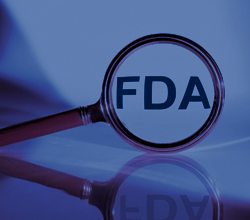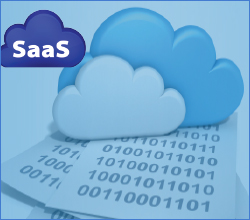
US, EU and Japan GMP Requirements: Practical ICH Area Differences, Healthcare Authority Inspection Focus
 Robert J Russell
Robert J Russell
 90 Min
90 Min
Product Id: 702029
This ICH GMP 90-minute webinar will provide your company the opportunity for comprehensive understanding of ICH Drug / Biologic GMP and the nuances and differences between the three main ICH triumvirate regions (U.S. EU and Japan). It will cover the key areas of how ICH was established, it’s goals and objectives, expectations of the healthcare authorities involved and practical differences that you will experience in a GMP inspection of a facility by FDA, an EU Competent Authority or PMDA.

GAMP Data Integrity 21 CFR Part 11 Training Course
 Kelly Thomas
Kelly Thomas
 90 Min
90 Min
Product Id: 706912
This course will cover data integrity, electronic records and signatures, and the compliant operation of GxP Computerized Systems to provide the tools and techniques to implement proper controls for data to ensure the integrity and validity of the information throughout the data lifecycle.

The Complexity and Interplay Among ADAAA, FMLA, and Worker's Comp (WC) - How Do They Work Together, or Not?
 Dr. Susan Strauss
Dr. Susan Strauss
 90 Min
90 Min
Product Id: 704959
The webinar training will address ADAAA, FMLA, and Worker’s Comp laws that HR is responsible for upholding. When the laws are not followed, it increases the liability for the organization and interferes with a fair and equitable work environment for employees.

Finished Pharmaceuticals CGMPs
 John E Lincoln
John E Lincoln
 90 Min
90 Min
Product Id: 706990
This webinar is intended to provide guidance regarding good manufacturing practice (GMP) for the manufacturing of finished pharmaceuticals under an appropriate system for managing quality. It is also intended to help ensure that The final drug product meets the quality and purity characteristics that they purport, or are represented, to possess.

Good Clinical Practice (GCP) Basics for GMP Experts
 David L Chesney
David L Chesney
 90 Min
90 Min
Product Id: 706991
This webinar presents an introduction to fundamental GCP concepts for personnel who are experienced in GMP but new to the GCP topic. It is designed to help adapt principles learned in a GMP context to GCP operations, pointing out the similarities and differences between Quality Assurance management in each of these disciplines.

NEW Nacha Operating Rules Changes for 2024 PLUS Changes Coming in 2026 – Part 2
 Donna K Olheiser
Donna K Olheiser
 90 Min
90 Min
Product Id: 706981
Part 2 – Effective March 20, 2026, two Rule amendments (Fraud Monitoring – Phase 1) – monitoring for Faud (as part of a larger Risk Management package) intended to reduce the incidence of successful fraud attempts and improve the recovery of funds after frauds have occurred.

FFIEC BSA/AML Examination Manual: What Compliance Officers Really Need to Know?
 Doug Keipper
Doug Keipper
 60 Min
60 Min
Product Id: 703792
This webinar will go through every section of the revised FFIEC Bank Secrecy Act/Anti-Money Laundering Examination Manual to highlight changes and areas where banks should review their internal policies, processes and procedures for compliance. Understanding these changes will keep you prepared and updated for your next BSA/AML examination.

Gaining and Re-establishing Control of Your Cleanroom
 Joy McElroy
Joy McElroy
 60 Min
60 Min
Product Id: 705317
This webinar will focus on the critical steps in starting up a new cleanroom operation and releasing it for manufacturing. It includes a case study-based approach to dealing with excursion events and establishing control of the cleanroom after a worst case event.

NEW Nacha Operating Rules Changes for 2024 PLUS Changes Coming in 2026 - Part 1
 Donna K Olheiser
Donna K Olheiser
 90 mins
90 mins
Product Id: 706973
Part 1 -- NEW changes to the Nacha Operating Rules include "minor" Rules changes - effective June 21, 2024 (no major impact on operations but a must know to remain in compliance - by knowing the things they are clarifying in the minor Rule change topics). In addition, Risk Management Topics - effective Oct 1, 2024 (covering topics that were proposed before but now really happening) - such as "Expanded use of Return Reason Codes R06 and R17"; "funds availability exceptions" and "Unauthorized Return changes for the RDFI with timing of the WSUD and returning the unauthorized transaction".

US FDA's Cybersecurity and NIST Framework Requirementsfor Networks
 John E Lincoln
John E Lincoln
 90 Min
90 Min
Product Id: 706971
Cybersecurity is the art of protecting networks, devices, and data from unauthorized access or criminal use. It is the practice of ensuring confidentiality, integrity, and availability of information, and is a rapidly growing problem for industry.

Annual Current Good Manufacturing Practices (cGMP) Training
 Kelly Thomas
Kelly Thomas
 60 Mins
60 Mins
Product Id: 705422
This webinar provides a basic understanding and fundamental principles of Current Good Manufacturing Practices and will fulfill the requirement of personnel involved in cGMP must have documented training of current Good Manufacturing Practices. This session will focus on the FDC Act and 21 CFR federal regulations as applied to cGMP.

ACH Government Payment Processing - Handling Death Notification Entries (DNEs) and Reclamations
 Donna K Olheiser
Donna K Olheiser
 90 Min
90 Min
Product Id: 704540
This 90-minute session will provide the details on what is different and how the Federal Government has adopted the NACHA Operating Rules and what the exceptions to those Rules incorporate for the Federal Government. You will learn what the Green Book is and how this valuable on-line tool will help you with processing DNE’s and Government Reclamations.

Assess Impact For Supplier Change Notices
 Alan M Golden
Alan M Golden
 60 Min
60 Min
Product Id: 706344
This webinar will discuss dealing with supplier change notices. Regulatory agencies have the expectation that a manufacturer has control over its supply chain and dealing with changes to that supply chain can be challenging.

The eSTAR Submission Program for 510(k)s, IDEs, De Novos, PMAs, and Q-Submissions
 John E Lincoln
John E Lincoln
 90 Mins
90 Mins
Product Id: 706968
The regulation and control of new or substantially changed medical devices for sale in the US is based on the 510(k), PMA or DeNovo submission process; 510(k)s now can only be submitted to the FDA under the eSTAR (electronic Submission Template And Resource) Portal. Other submissions will be phased in using new guidance templates as they become available.

FDA Compliant Handling of Out-of-Trend Results in Pharmaceutical Quality Control
 Kelly Thomas
Kelly Thomas
 90 Mins
90 Mins
Product Id: 702540
This webinar will discuss the FDA requirements and guidelines for investigating Out-of-trend (OOT) results in the pharmaceutical laboratory. It will also cover FDA compliant documentation of OOT, failure investigations, root causes and CAPA.

Unauthorized Transactions – Reg E vs Nacha Operating Rules
 Donna K Olheiser
Donna K Olheiser
 90 Min
90 Min
Product Id: 706856
Unauthorized transactions come in many different forms, when returning using Reg E or the Nacha Operating Rules can be confusing. Discussion will include what, why and when while processing unauthorized returns. The trainer will define the limits of liability and who is liable for what amount while providing some real-life scenarios. Details on the error resolution process with Reg E for consumer notification to the financial institution, research time involved, and the timing of providing provisional credit; included will be guidelines on the “what if” there is no error, and providing notice to consumer, and any overdraft protection relating to that provisional credit being reversed. Included will be outlining the ACH return process, when using the ACH network is appropriate, and paperwork/forms needed. Recent Rules changes affecting Nacha compliance when sending unauthorized ACH Returns using Return Reason Codes R10 vs. R11 is included.

P&PC, SPC/6Sigma, Failure Investigation, Root Cause Analysis, PDCA, DMAIC, A3
 John E Lincoln
John E Lincoln
 90 Min
90 Min
Product Id: 706963
This webinar is intended to provide guidance regarding the CGMPs on manufacturing methods utilizing the US FDA Production and Process Controls for Drugs and Devices and Statistical Process Controls (SPC) as taught by Drs. Demming and others and required also in the CGMPs and under control of variation process guidance.

Design Control / Ddesign and Development Requirements / Documents Under 21 CFR 820/ ISO 13485 7.3
 John E Lincoln
John E Lincoln
 90 Mins
90 Mins
Product Id: 706923
Proper adherence and documentation of the FDA's Design Control requirements are key to any medical product project's success.

Family Care and Medical Leave in California - Part I
 Jacquiline M Wagner
Jacquiline M Wagner
 90 Min
90 Min
Product Id: 704507
The Family and Medical Leave Act (29 U.S.C. § 2601 et seq)- known as the “FMLA”- was signed into law by President Bill Clinton in 1993 in response to a growing national concern about balancing work and family responsibilities.

Deconstructing EU MDR with Principles of Lean Documents and Lean Configuration
 Jose Mora
Jose Mora
 120 Min
120 Min
Product Id: 706959
The EU MDR is a comprehensive and complex regulation that combines all aspects of placing certain types of medical devices on the EU market into one regulation. It addresses the obligations of economic operators in this role, and provides for extensive databases, clinical requirements, classifications, conformity, and many defined relationships between agencies, member states, and other directives and regulations.
This webinar deconstructs the many parts of this regulation into the elements of lean documents and lean configuration, providing an opportunity to apply these principles as a way to create and maintain flexibility as this and new harmonized standards and regulations emerge.


























